I'll structure this as requested: intro (max 100 words), 25 H2 sections (100-101 words each), conclusion (max 100 words), and image prompts for each section.Creating effective classroom lighting enhances student focus, academic performance, and overall wellbeing. Modern educators recognize that lighting design directly impacts learning environments, influencing mood, concentration, and behavioral patterns. From energy-efficient LED systems to creative ambient solutions, classroom lighting extends far beyond basic illumination. Smart lighting strategies incorporate natural daylight, adjustable color temperatures, and flexible controls to support diverse teaching activities. Whether implementing full-spectrum panels that mimic sunlight or adding cozy string lights for reading corners, thoughtful lighting design transforms ordinary classrooms into engaging, comfortable learning spaces that promote both educational success and student comfort.
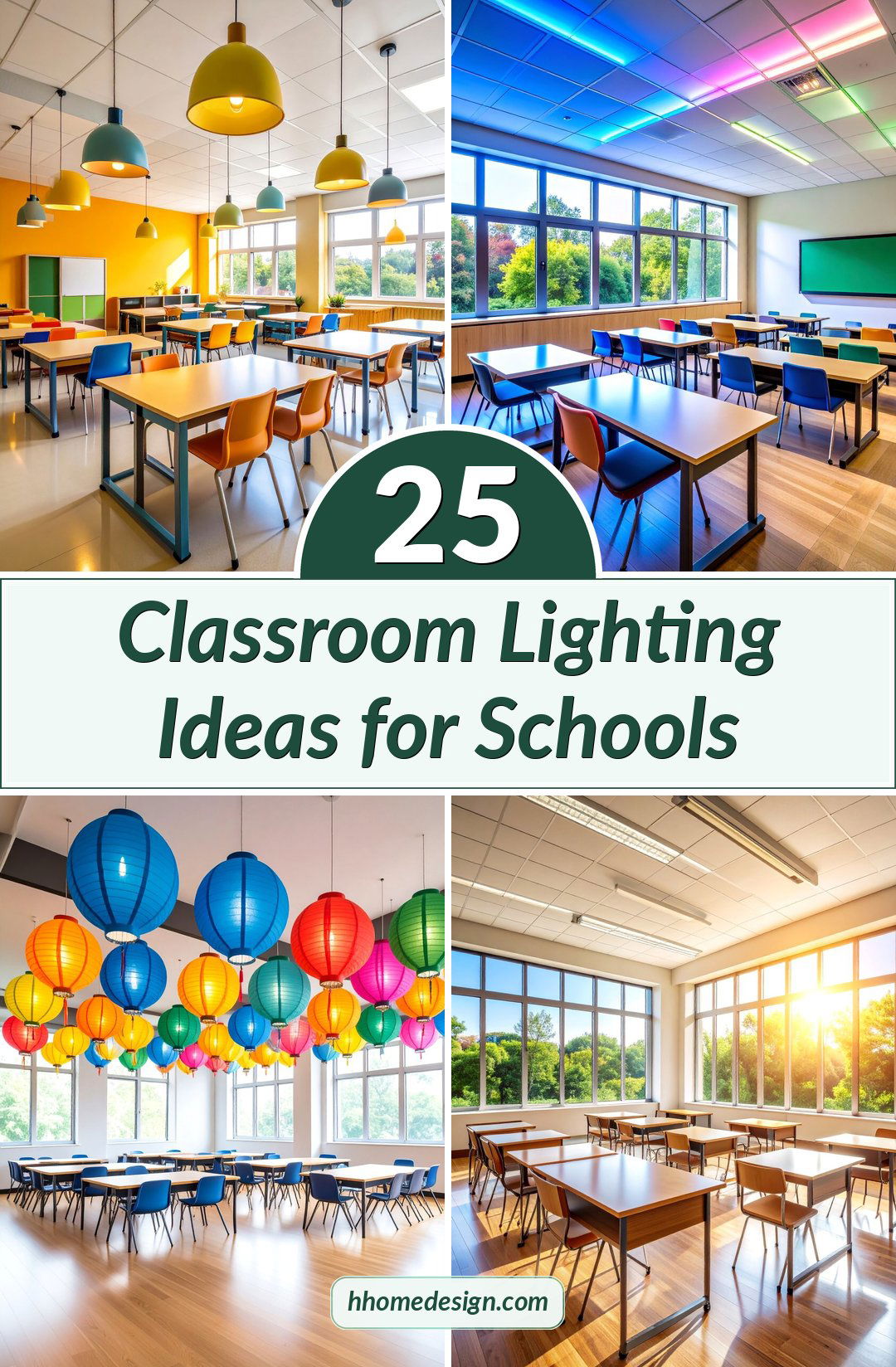
1. LED Panel Classroom Lighting with Daylight Mimicking

LED panel lights provide uniform illumination that minimizes shadows and glare while closely mimicking natural daylight. These ceiling-mounted fixtures distribute light evenly across the classroom space, reducing eye strain and creating optimal conditions for reading, writing, and detailed work. The panels feature adjustable color temperatures, allowing teachers to create cooler lighting for high-focus activities like testing or warmer tones for collaborative discussions. LED panels are energy-efficient, lasting significantly longer than traditional fluorescent fixtures while producing less heat. Installation involves replacing existing ceiling fixtures with these modern alternatives that support dimming controls and can be integrated into smart lighting systems for automated adjustments throughout the day.
2. Natural Daylight Classroom with Large Windows

Natural light has been shown to improve student academic performance, reduce absenteeism, and enhance overall wellbeing. Classrooms designed with large windows optimize natural illumination while incorporating proper shading systems to control glare and brightness levels. Utilizing natural sunlight creates a relaxed learning environment and keeps students focused and alert. This design features strategically placed windows with adjustable blinds or curtains, supplemented by minimal artificial lighting during darker periods. The natural lighting approach supports circadian rhythms, helping students maintain healthy sleep-wake cycles. Teachers can control light levels throughout the day by adjusting window coverings, reducing reliance on electric lighting while maintaining comfortable visual conditions for all learning activities.
3. Ambient String Light Classroom Environment

String lights create a cozy and inviting ambiance, making learning fun while providing a soft glow for various classroom activities. This design incorporates LED string lights strategically placed around bulletin boards, windows, and ceiling perimeters to create warm atmospheric lighting. The lights can be controlled with remote dimmers and timers, allowing teachers to adjust brightness for different activities like quiet reading time or audiobook sessions. String lights can be hung around classroom windows, whiteboards, and ceiling panels, creating multiple lighting zones. Battery-operated options eliminate cord safety concerns while providing flexibility in placement. This approach transforms traditional classroom lighting into an engaging, homelike environment that reduces stress and promotes student comfort.
4. Smart Color-Changing LED Classroom System

Color-changing LED strips allow teachers to adjust lighting based on the lesson's mood or time of day, with remote sensors and dimmers making it easy to control the classroom ambiance. This comprehensive system features programmable LED fixtures that can cycle through different colors and intensities to support various learning activities. Cool blue tones enhance focus during math lessons, while warm amber creates a calming atmosphere for story time. The smart controls enable teachers to create lighting scenes for specific subjects or times of day. Motion sensors automatically adjust lighting based on occupancy, promoting energy efficiency. The system integrates with classroom management tools, allowing lighting changes to signal transitions between activities or reward positive behavior.
5. Task-Focused Reading Corner Lighting
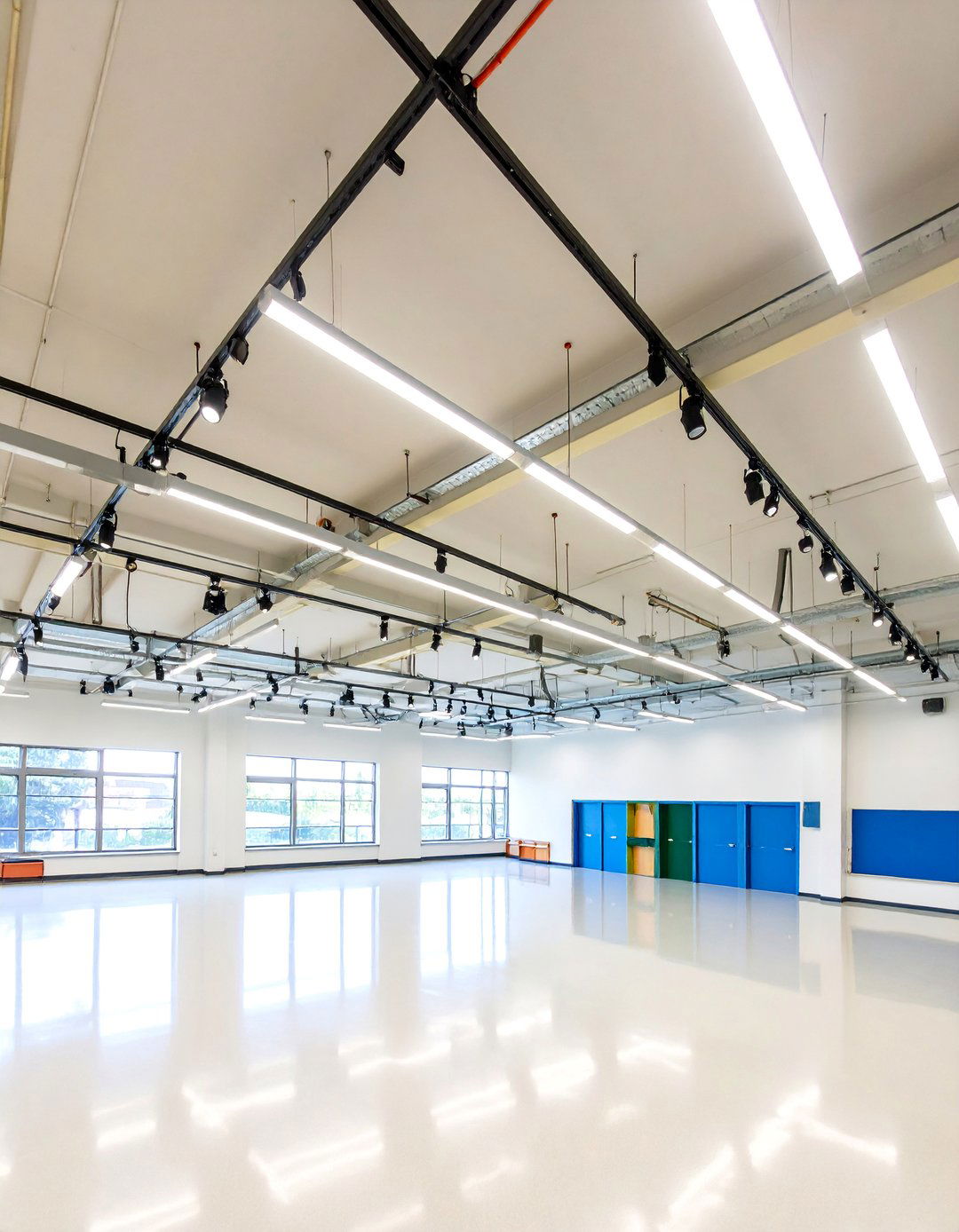
Downlights offer targeted illumination, perfect for specific classroom areas like reading nooks or group workspaces. This design creates dedicated lighting zones for focused learning activities, featuring adjustable desk lamps and targeted spotlighting for reading areas. The setup includes warm-toned LED bulbs (60-80 watt equivalent) positioned to eliminate shadows on reading materials while maintaining comfortable ambient lighting in surrounding areas. Accent lamps provide additional lighting, helping with visibility and creating a well-lit room atmosphere. Floor lamps near the board area provide brighter illumination for presentations, while smaller table lamps throughout the room allow quick atmosphere changes. This approach supports various learning styles by providing appropriate lighting levels for individual and group work.
6. Fluorescent Light Filter Transformation
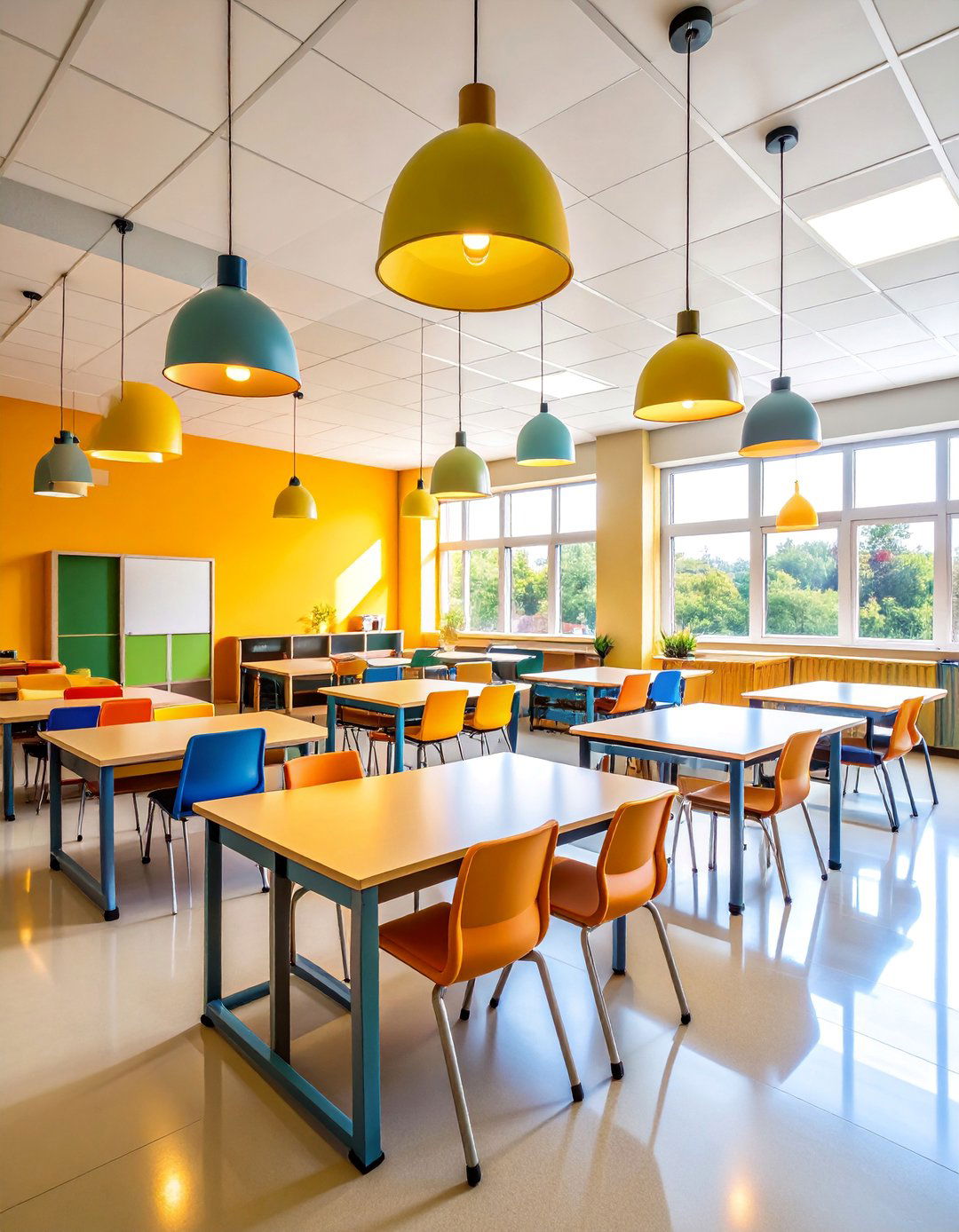
Light filters create a more comfortable environment by reducing glare and minimizing eyestrain while contributing to better focus among students. This solution addresses harsh fluorescent lighting through decorative covers that diffuse light and reduce flicker effects. Available in various designs from soft pastel fabrics to plastic adhesive clouds, stained glass, waterfalls, ocean scenery, and even the Milky Way, these covers attach magnetically to existing fixtures. The transformation creates softer, more appealing lighting conditions without requiring electrical modifications. Teachers can select covers that complement classroom themes while improving visual comfort. This cost-effective approach reduces the harsh institutional feel of standard fluorescent lighting, creating a more inviting learning environment that supports extended periods of concentration and reduces student fatigue.
7. Paper Lantern Classroom Chandelier

Paper lanterns can be formed together with zip ties and illuminated with LED lights inside to create stunning visual effects. This creative lighting solution involves clustering colorful paper lanterns at various heights to create an artistic chandelier effect over central classroom areas. LED string lights or battery-operated LED bulbs can be placed inside lanterns for safe, efficient illumination. The design incorporates multiple lantern sizes and complementary colors that align with classroom themes or seasonal decorations. Hanging at strategic heights ensures they remain out of students' reach while providing decorative lighting. This approach combines functional ambient lighting with visual appeal, creating an engaging focal point that stimulates creativity and makes the classroom feel more welcoming and less institutional.
8. Track Lighting Classroom System

Track lighting provides excellent flexibility and can provide ambient, task or accent lighting, with individual fixtures that can be moved, swiveled, and aimed in any direction. This professional lighting system features adjustable spotlights mounted on ceiling tracks, allowing precise lighting control for different classroom zones. Teachers can redirect light toward presentation areas, student workstations, or wall displays as needed throughout the day. Multiple rows of luminaires ensure sufficiently high light levels while providing flexible control options. The system accommodates various pendant attachments and can integrate with dimming controls for activity-specific lighting scenes. This solution works particularly well in classrooms with changing layouts or multiple learning centers, providing professional-grade illumination that adapts to diverse teaching methods and spatial arrangements.
9. Pendant Light Learning Stations

Suspended luminaires distribute light efficiently without glare, providing even lighting in workspace areas. This design features individual pendant lights positioned over specific learning stations, work tables, and collaborative areas throughout the classroom. Luminaires with 30-50 percent upward light distribution create uniform illumination on work surfaces while contributing to overall ambient lighting. Each pendant can be independently controlled, allowing teachers to highlight active learning areas while dimming unused spaces. The design incorporates various pendant styles that complement classroom decor while providing focused task lighting. This approach creates defined learning zones within the classroom, supporting both individual work and small group activities with appropriate illumination levels for each area.
10. Circadian Rhythm Support Lighting
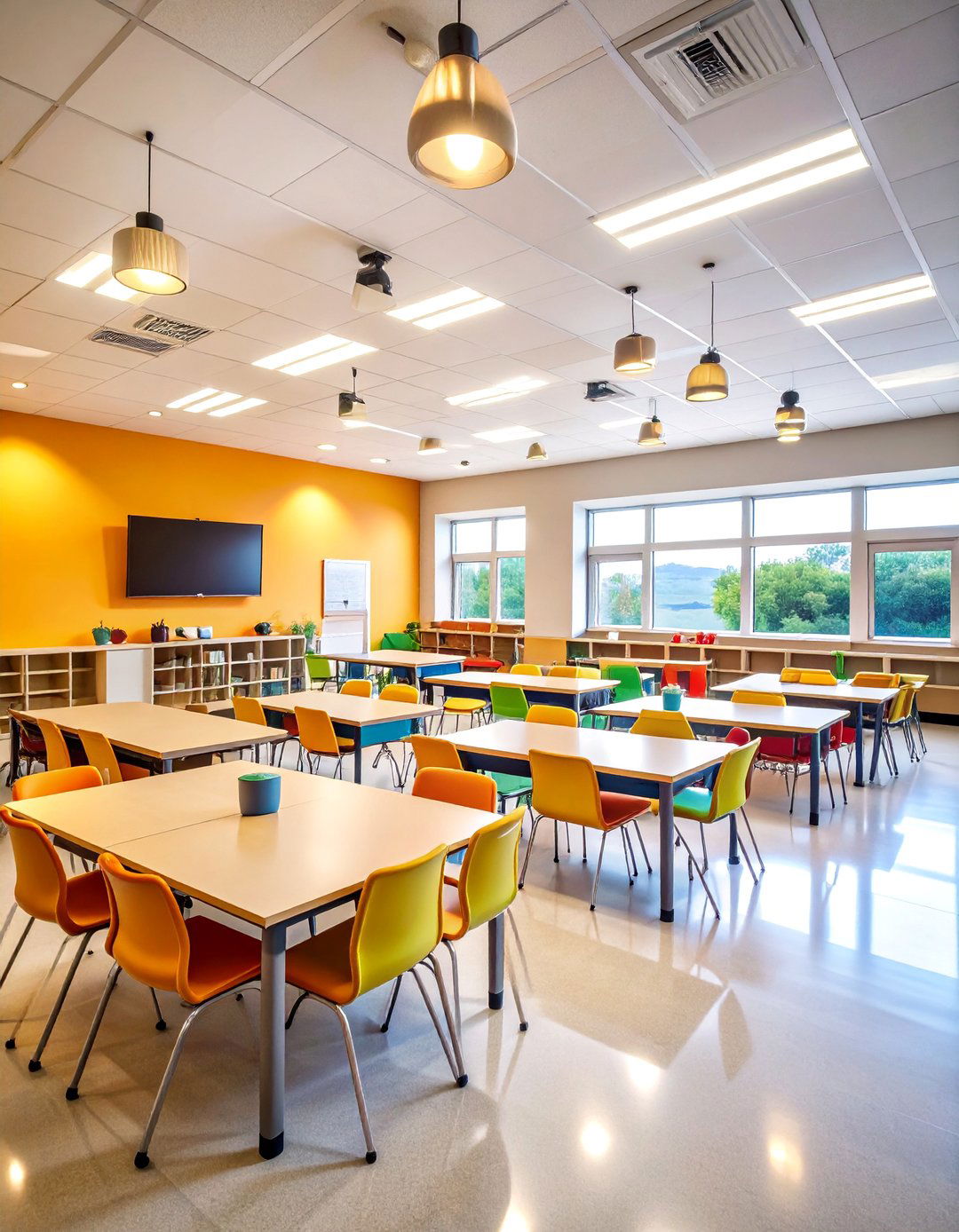
Human Centric Lighting comprises solutions that meet people's visual, biological and emotional light needs through a combination of daylight and electric lighting. This advanced system adjusts color temperature and intensity throughout the day to support natural biological rhythms. Starting the day with 250 melanopic lux for 2 hours, the system provides varying light levels and color temperatures. Cool, bright lighting during morning hours promotes alertness and focus, while warmer tones later in the day prevent overstimulation. LED lights producing cooler temperature light (4100K-5000K) have calming effects on students, helping them focus and concentrate more. The automated system requires minimal teacher intervention while supporting student health, improving sleep patterns, and enhancing overall classroom performance through biologically appropriate lighting throughout the school day.
11. Emergency and Safety Lighting Integration
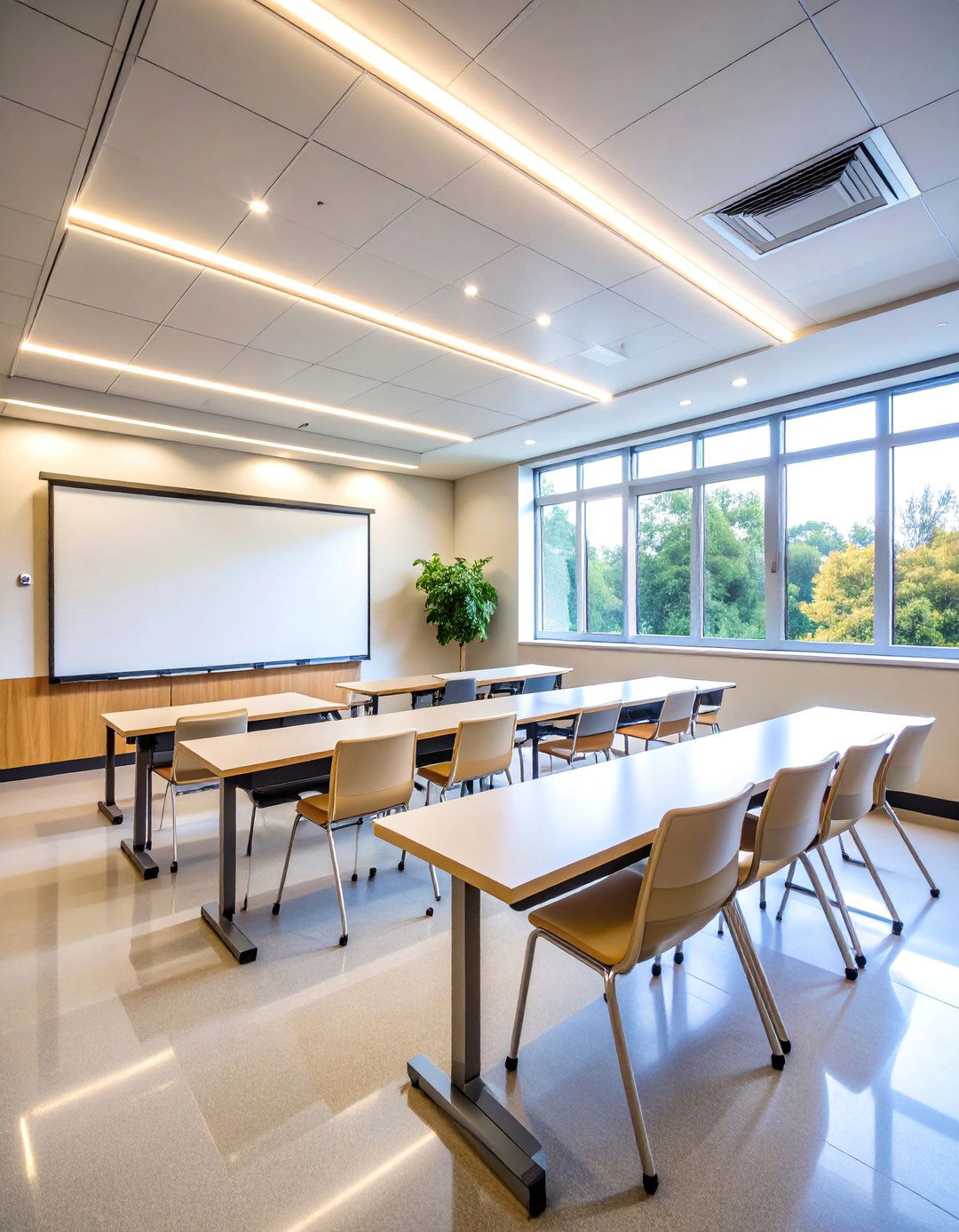
Emergency lighting is a must-have safety feature in any educational facility, operating during power failures and providing clear visibility for safe evacuation. This comprehensive approach integrates emergency lighting systems seamlessly with regular classroom illumination. Battery-backed LED fixtures provide sufficient lighting during power outages while maintaining normal classroom functionality during regular hours. The design includes clearly marked exit pathways with illuminated signage and strategically placed emergency fixtures that activate automatically during power failures. These fixtures are critical parts of school safety protocols, ensuring illumination is available in emergencies. The dual-purpose fixtures serve daily lighting needs while providing essential safety features, combining regulatory compliance with practical classroom lighting requirements for comprehensive educational facility management.
12. Warm White LED Ceiling Environment

Warm-yellow LED light helps students feel more relaxed and perform better on independent work activities. This design creates a comfortable learning atmosphere using warm white LED fixtures (2700K-3000K) throughout the ceiling space. The consistent warm lighting reduces the institutional feel of traditional fluorescent systems while maintaining adequate illumination levels for all classroom activities. LED lights produce less heat, contributing to a more comfortable classroom temperature. Multiple fixture zones allow teachers to adjust lighting intensity for different activities while maintaining the warm color temperature. The design emphasizes even light distribution to prevent shadows and glare, creating an inviting environment that feels more like home than a traditional institutional setting, promoting student comfort and engagement.
13. Interactive Mood Lighting Control
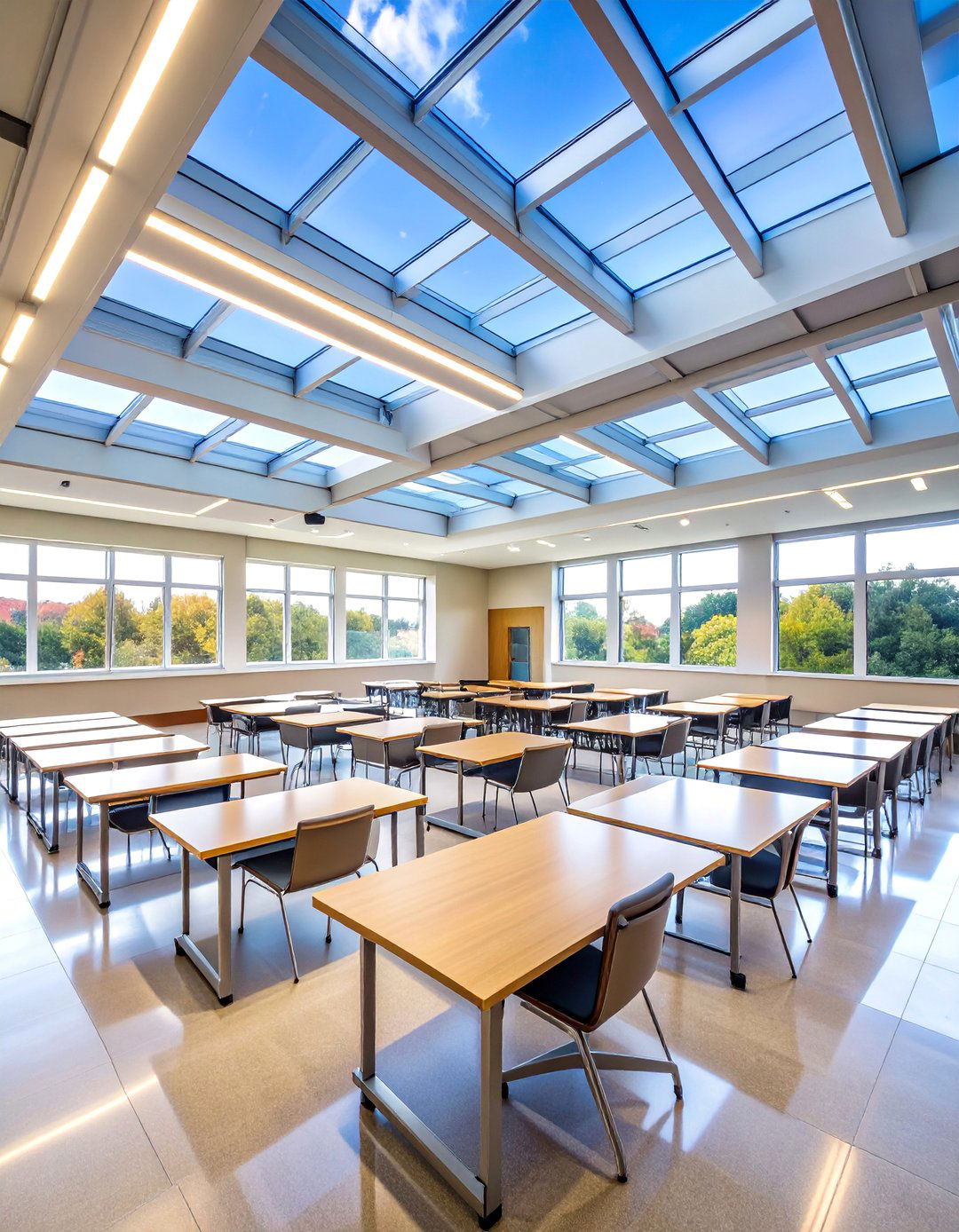
Students can choose different colors each day for an interactive atmosphere, with lighting systems that allow multiple scene options for various activities. This student-centered approach incorporates controllable LED systems that enable classroom participation in lighting decisions. Color changing effects can be used for classroom management, with remote controls allowing instant lighting adjustments. Students take turns selecting daily color schemes or lighting moods that align with lesson themes or classroom celebrations. The system includes pre-programmed scenes for different subjects, testing periods, and quiet activities. Teachers maintain override controls while allowing student input in creating their learning environment. This interactive approach increases student engagement and ownership of their classroom space while teaching responsibility and the connection between environment and mood.
14. Cloud Light Weather-Themed Display
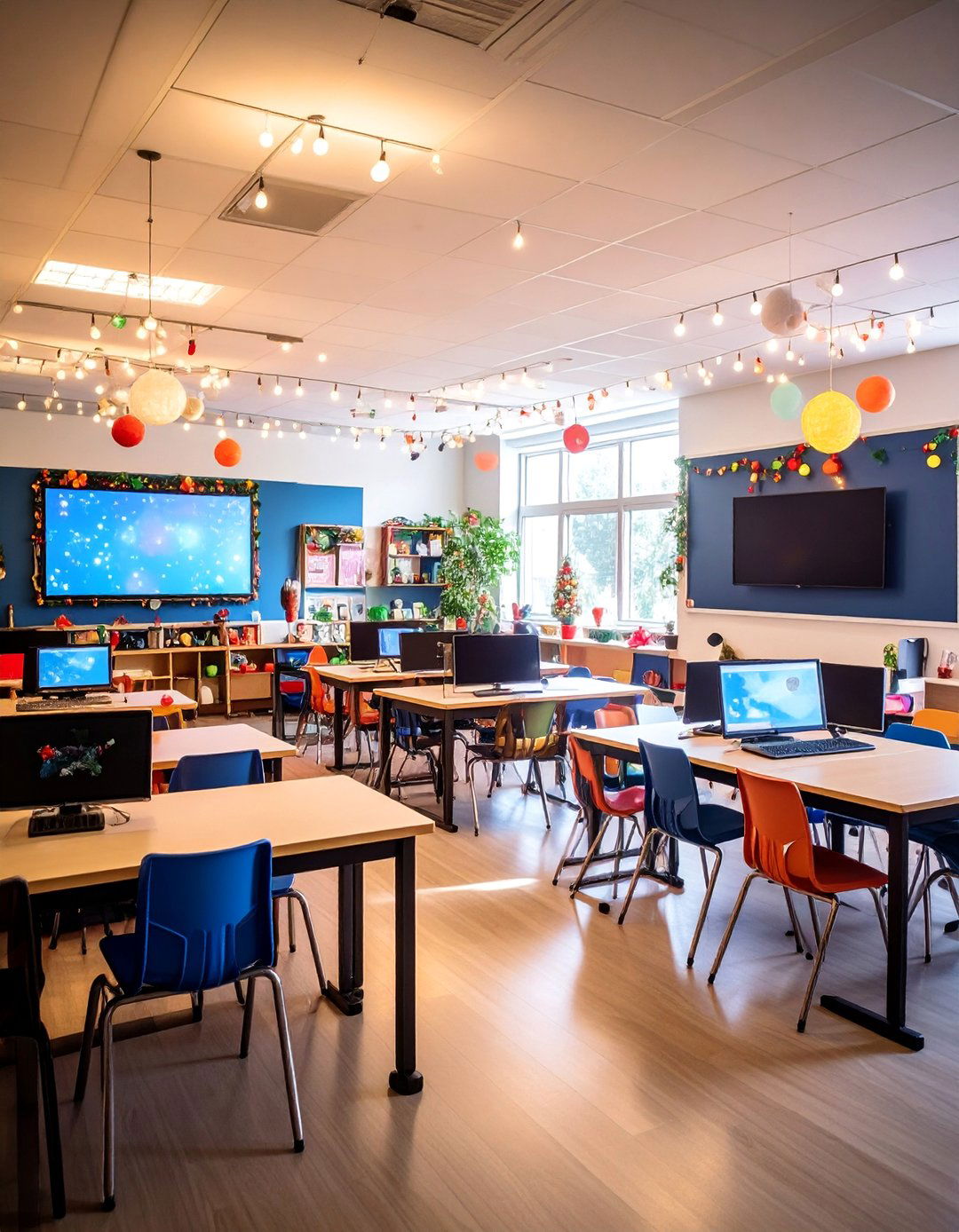
Cloud light fixtures can give the effect of lightning storms and even move to music, created using white round paper lanterns formed together with zip ties and covered with poly-fill. This creative installation features a large cloud-shaped light fixture suspended from the classroom ceiling, incorporating color-changing LED lights hidden within cotton batting material. The cloud light adds atmosphere to weather education topics while providing functional ambient lighting with remote control operation. The fixture can simulate various weather effects through different lighting colors and patterns, supporting science curriculum while creating an engaging focal point. Teachers can use the cloud light for dramatic effects during storytelling, weather lessons, or as a calming presence during quiet activities. This unique lighting solution combines educational value with practical illumination needs.
15. Dimmable Classroom Zone Lighting

Dimmable lights accommodate different educational media, reducing glare on screens during presentations and adjusting back for writing or reading tasks. This flexible system divides the classroom into multiple lighting zones, each with independent dimming controls. Teachers can create different lighting levels for presentation areas, student work zones, and quiet corners simultaneously. The system includes special lighting for test taking that helps students focus and feel more secure. Front-of-classroom fixtures dim automatically during screen presentations, while maintaining adequate lighting in student seating areas. Reading areas receive brighter, focused lighting, while collaborative spaces use softer ambient levels. The zoned approach allows simultaneous activities with appropriate lighting for each, supporting modern flexible learning environments and diverse teaching methodologies.
16. Floor and Table Lamp Classroom Accent System
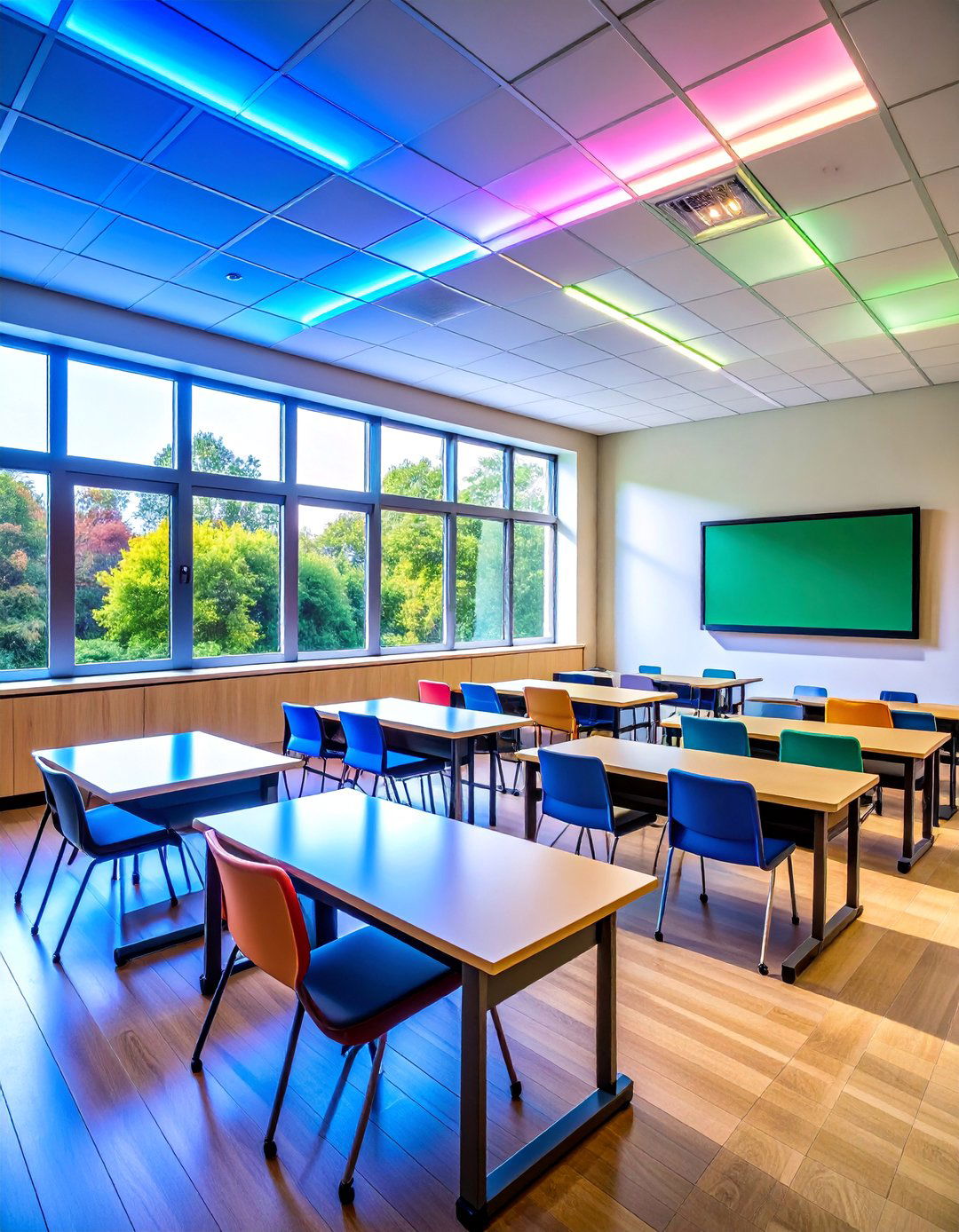
Floor lamps and table lamps provide warm ambient lighting that creates a homelike atmosphere, with soft diffused lighting that reduces eye strain. This approach supplements overhead lighting with strategically placed accent lamps throughout the classroom space. Floor lamps near presentation areas provide brighter illumination, while smaller table lamps create cozy reading nooks and study areas. The design incorporates various lamp styles that complement classroom decor while providing flexible lighting options. Warm yellow bulbs between 60-80 watt equivalent work best for classroom environments, with LED options providing durability and energy efficiency. Teachers can easily relocate lamps to accommodate changing classroom layouts, creating intimate learning spaces that feel more residential than institutional. This solution particularly benefits younger students who respond well to homelike environments.
17. Whiteboard Integrated Lighting Design

Whiteboards with integrated lighting make lesson materials vibrant and eye-catching, with enhanced visibility helping students focus on content. This specialized system positions LED strip lights around whiteboard perimeters and adjacent bulletin boards to eliminate shadows and provide optimal visibility for presentations. The lighting design reduces glare on whiteboard surfaces while ensuring clear visibility from all student seating positions. LED strip lights can be lined around whiteboards and adjacent bulletin boards to provide beautiful illumination. Adjustable brightness controls allow teachers to optimize lighting for different presentation materials and times of day. The integrated approach ensures consistent illumination across all presentation surfaces, supporting effective visual communication and reducing eye strain for both teachers and students during instruction periods.
18. Color Temperature Adjustable Learning Environment

Lights with variable color temperatures can instantly change the atmosphere, with cooler temperatures ideal for high-focus activities and warmer tones for comfortable discussions. This advanced lighting system automatically adjusts color temperature throughout the day to optimize learning conditions. Cool-whitish light from LED produces heightened alertness and enhanced academic performance, while warm-yellow light creates relaxation for independent work. Morning sessions begin with energizing cool white light (5000K+) to promote alertness, transitioning to neutral daylight (4000K) for standard activities, and warming to comfortable tones (3000K) for afternoon reading and quiet work. Teachers can manually override automatic settings for specific activities or subjects. This scientifically-based approach optimizes student performance and comfort throughout the school day.
19. Motion Sensor Energy-Efficient Classroom

Motion sensors enhance energy efficiency by automatically turning lights off when no movement is detected, reducing unnecessary power usage. This smart lighting design incorporates occupancy sensors throughout the classroom to automatically manage lighting based on student and teacher presence. The system gradually dims lights in unused areas while maintaining full illumination in active zones. Motion sensors work with LED lighting systems to maximize energy savings while ensuring adequate illumination when needed. Multiple sensor zones prevent false shutoffs when students are quietly working, while automatically activating lights when students enter the classroom. The design includes manual override controls for special activities and adjustable sensitivity settings. This approach teaches environmental responsibility while reducing energy costs and supporting school sustainability initiatives through intelligent lighting management.
20. Skylight and Rooflight Natural Illumination
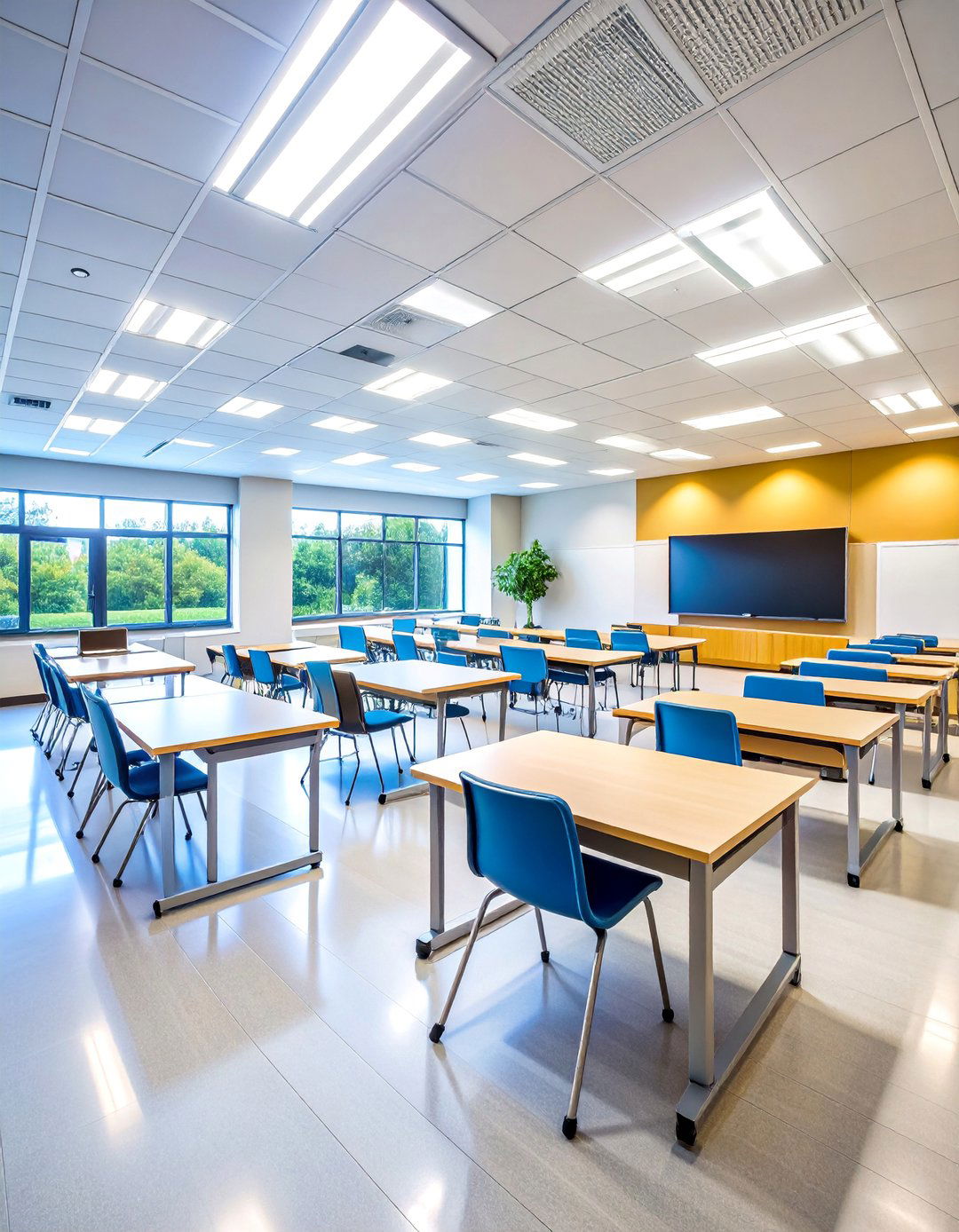
Rooflights let in light from the brightest part of the sky and are not usually affected by external obstructions, providing views of the sky and promoting wellbeing. This design maximizes natural illumination through strategically placed skylights and roof windows that supplement wall-mounted windows. Natural lighting should be the major source during daylight hours, supplemented by electric light where needed. The system includes automated shading controls to prevent glare and overheating while maintaining optimal natural light levels. Rooflights promote a sense of wellbeing and connection to nature without distractions from external views. Daylight sensors automatically adjust artificial lighting to maintain consistent illumination levels regardless of weather conditions. This approach provides maximum natural light benefits while ensuring consistent learning conditions throughout the school year.
21. Festive Holiday Theme Lighting

Color-changing LED lights can be adjusted based on holidays and mood, with students able to choose different colors each day for interactive atmosphere. This seasonal lighting approach incorporates programmable LED systems that adapt to classroom celebrations and educational themes throughout the year. The design features color-changing capabilities that align with holidays, seasons, and special events while maintaining appropriate lighting levels for learning activities. Teachers can create themed lighting scenes for different subjects, with warm autumn tones for harvest lessons or cool blues for winter science topics. Different colors can be set depending on block day schedules or special classroom activities. The system includes standard white lighting modes for regular instruction while offering creative options that enhance special occasions and make learning more engaging and memorable for students.
22. Reading Nook Cozy Corner Lighting
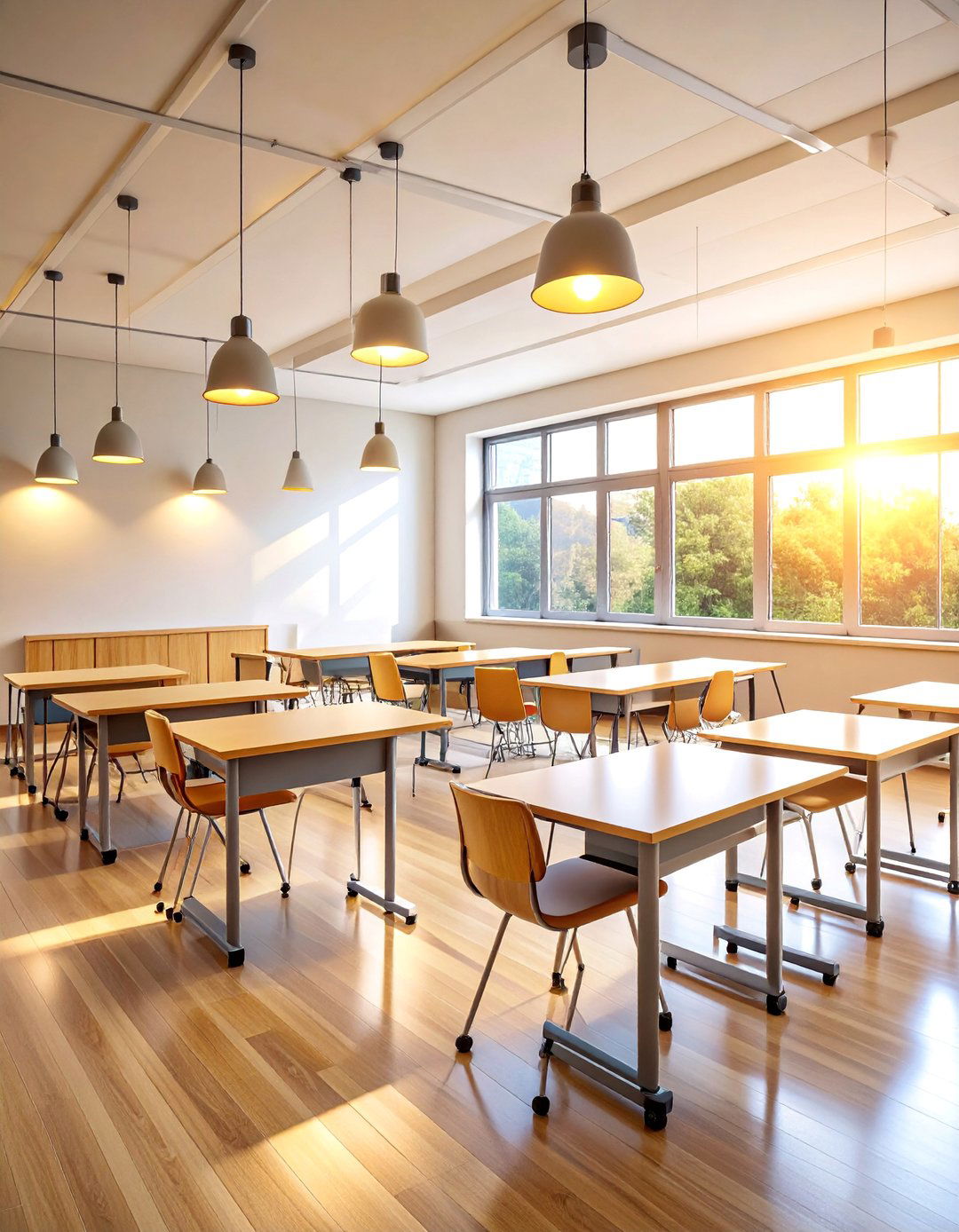
Targeted illumination is perfect for specific classroom areas like reading nooks, with recessed design minimizing distractions while adjustable options create the right mood. This specialized design creates intimate reading spaces with dedicated lighting that encourages sustained reading and quiet activities. Soft diffused lighting from table lamps contributes to a sense of wellbeing and creates an environment that feels more like home. The design incorporates multiple lighting layers including overhead spotlights, table lamps, and wall sconces positioned to eliminate shadows on reading materials. Warm color temperatures and adjustable brightness levels allow students to customize their reading environment. Comfortable seating areas receive focused task lighting while maintaining separation from more active classroom zones. This approach supports independent learning and provides quiet spaces for students who need reduced stimulation.
23. Gallery Track Lighting for Student Displays

Track lighting provides excellent flexibility for accent lighting, with individual fixtures that can be moved and aimed in any direction to highlight specific areas. This museum-style approach uses adjustable track lighting to showcase student artwork, projects, and displays throughout the classroom. Track systems offer more function while rail systems offer more style, with both compatible with various pendants and heads. Individual spotlights can be repositioned to highlight changing displays and seasonal decorations. The system includes both wall-mounted and ceiling tracks that create professional-looking display lighting for student work. Special attachments allow hanging chandeliers and pendants from tracks for additional decorative options. This approach celebrates student achievements while teaching appreciation for proper lighting in display settings, making the classroom feel more like a professional gallery space.
24. Faux Window Light Therapy System
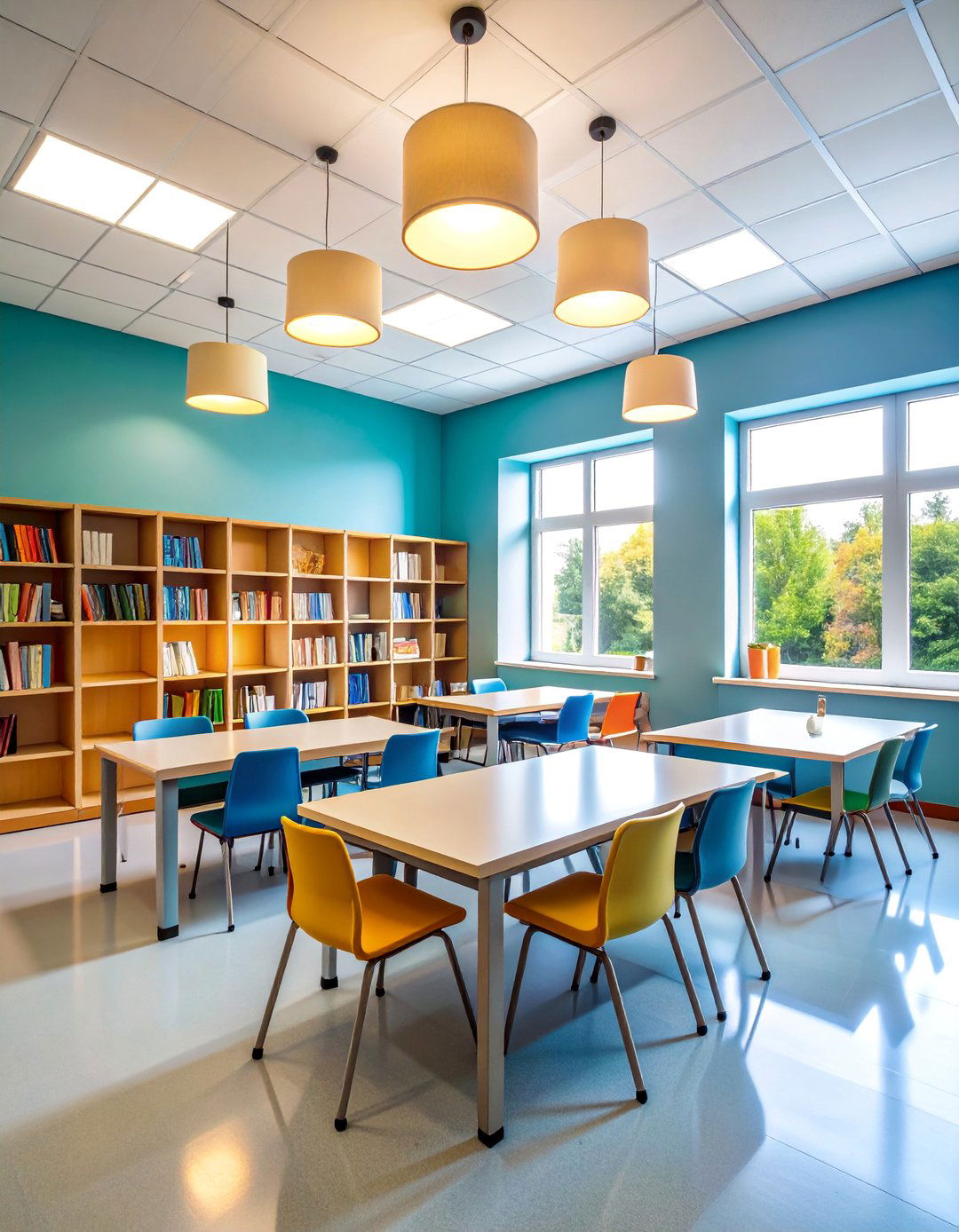
Faux windows using adhesive sheets create scenic views without permanent installation, available in various scenery types that don't leave marks when removed. This solution addresses windowless classrooms through artificial window displays combined with full-spectrum lighting that mimics natural daylight. Teachers should use full-spectrum lightbulbs or lightbulbs with a CRI of 90 percent or more to simulate natural daylight conditions. The design incorporates LED panels positioned behind translucent scenic displays to create the appearance of natural window lighting. Students can be involved in creating picturesque views, making the project educational and collaborative. The system provides psychological benefits of outdoor views while delivering high-quality artificial daylight that supports circadian rhythms and reduces the institutional feel of windowless spaces.
25. Classroom Chandelier Statement Lighting
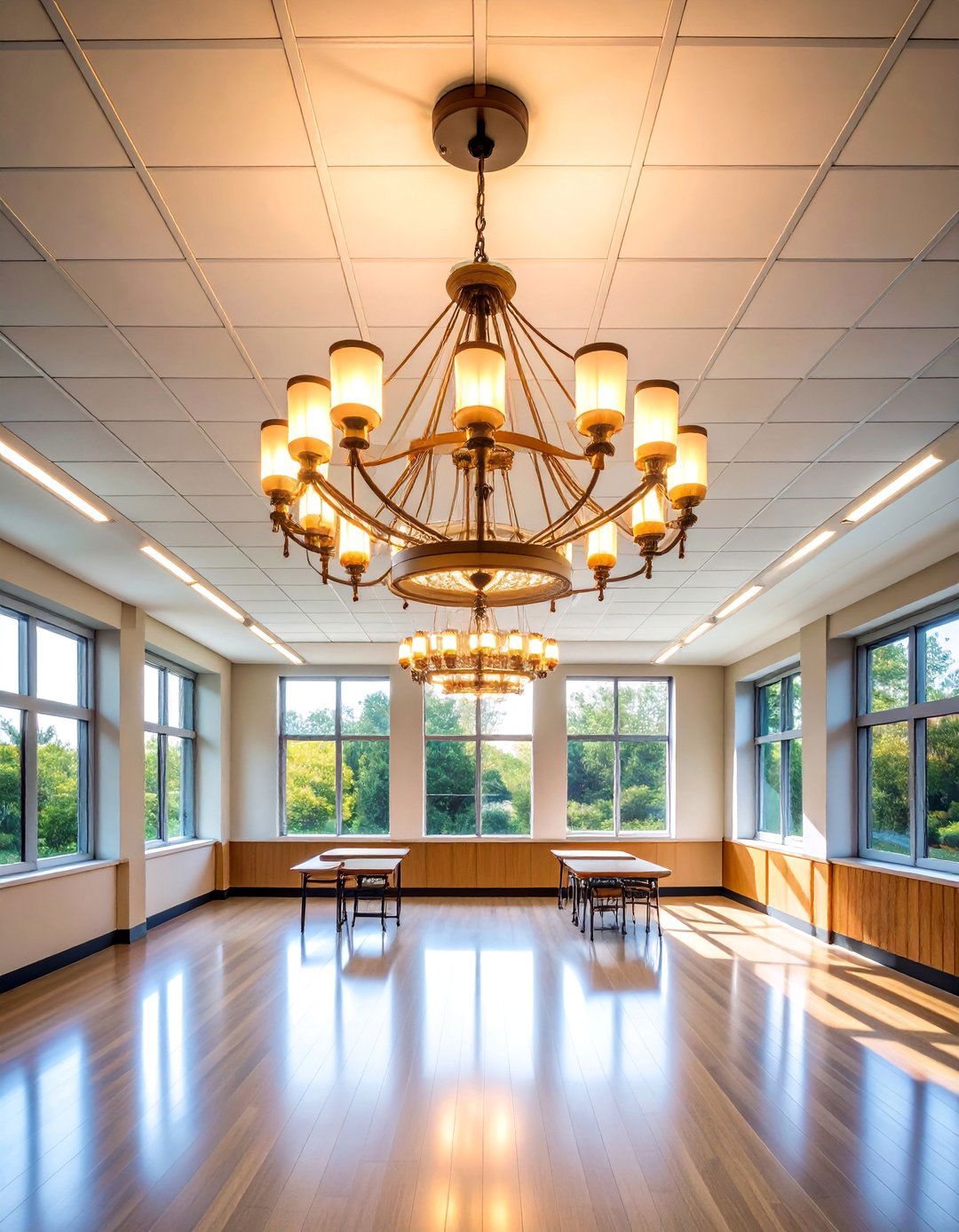
Suspended paper or fabric lanterns create cozy atmosphere and can add cultural elements to lessons, enriching students' learning experiences. This elegant approach features a central chandelier or statement light fixture that serves as both functional lighting and artistic focal point for the classroom. The design can incorporate various materials from traditional crystal elements to modern paper lanterns, fabric shades, or recycled materials created by students. Fun-shaped lamps and themed lights that align with classroom subjects add educational value while providing practical illumination. The chandelier provides ambient lighting for the entire classroom while creating visual interest and supporting lesson themes. Installation considerations include appropriate height for safety and maintenance while ensuring the fixture complements rather than overwhelms the learning environment. This approach adds sophistication and personality to classroom design.
Conclusion:
Effective classroom lighting transforms educational environments by supporting student health, enhancing academic performance, and creating welcoming spaces that promote learning. From energy-efficient LED systems to creative ambient solutions, modern lighting designs address diverse educational needs while supporting teacher flexibility and student engagement. Students perform better academically in classroom settings with comfortable, high-quality lighting. These lighting strategies demonstrate that thoughtful illumination design extends beyond basic visibility to influence mood, behavior, and educational outcomes. Successful classroom lighting combines functionality with creativity, creating environments where students and teachers thrive.



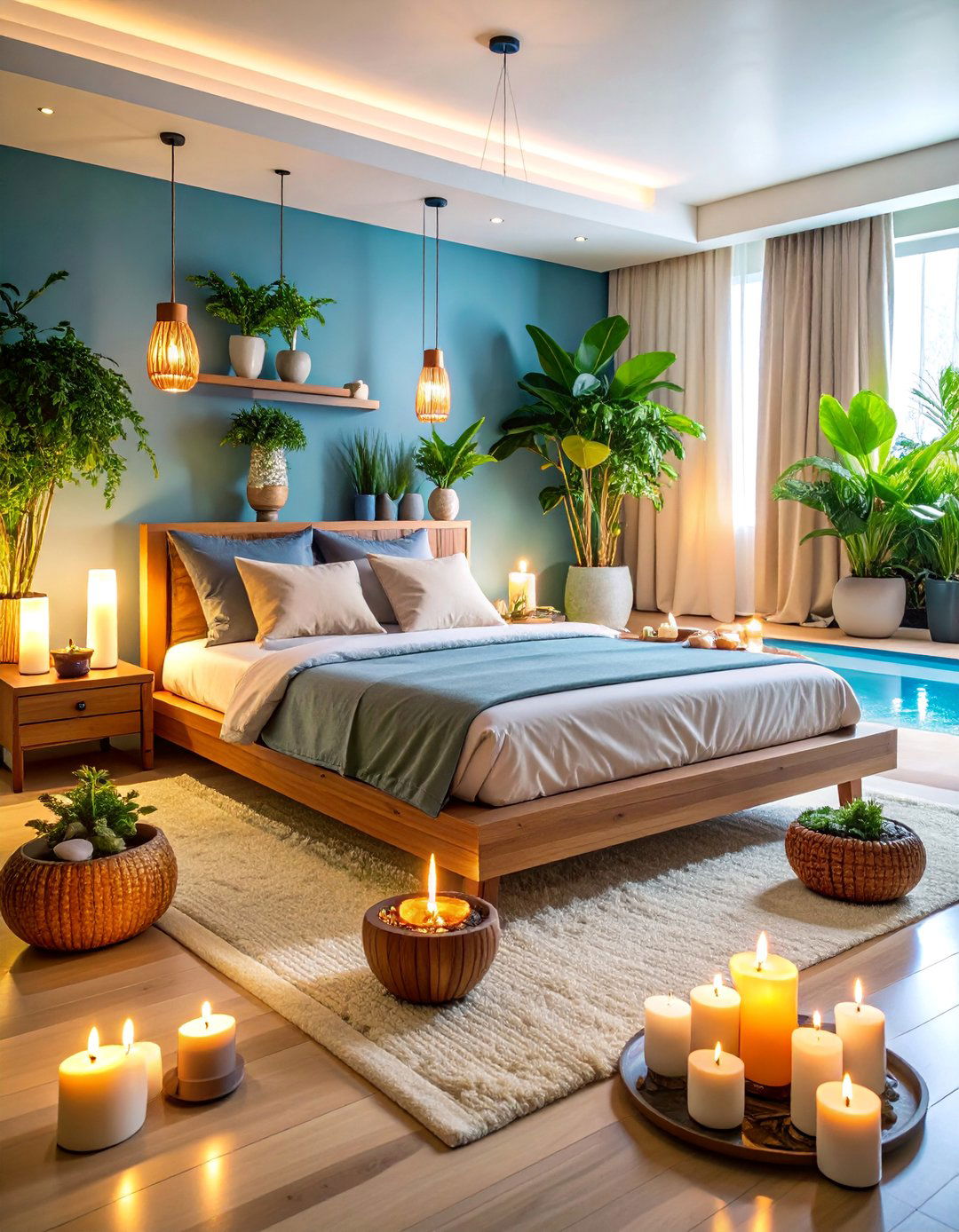
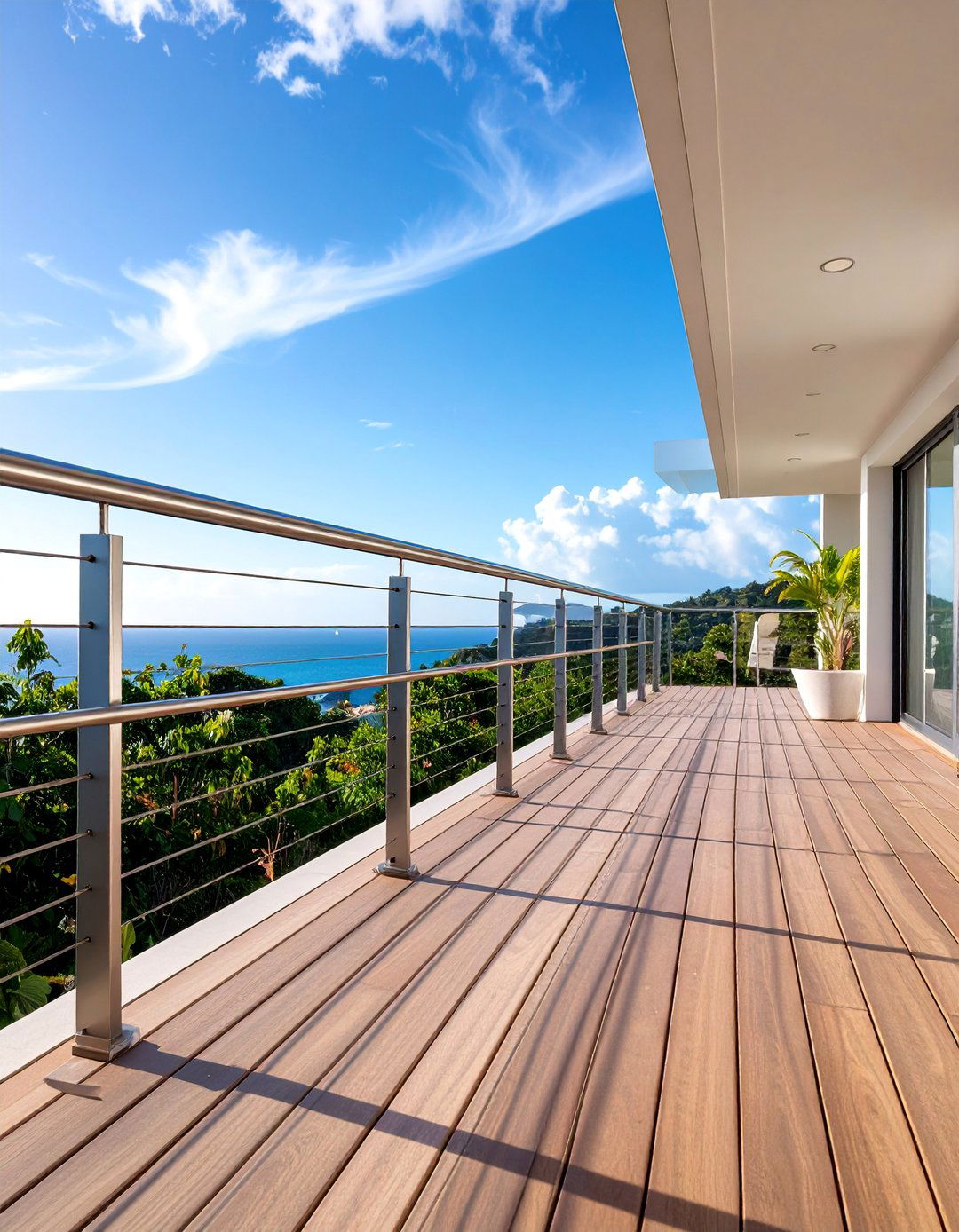
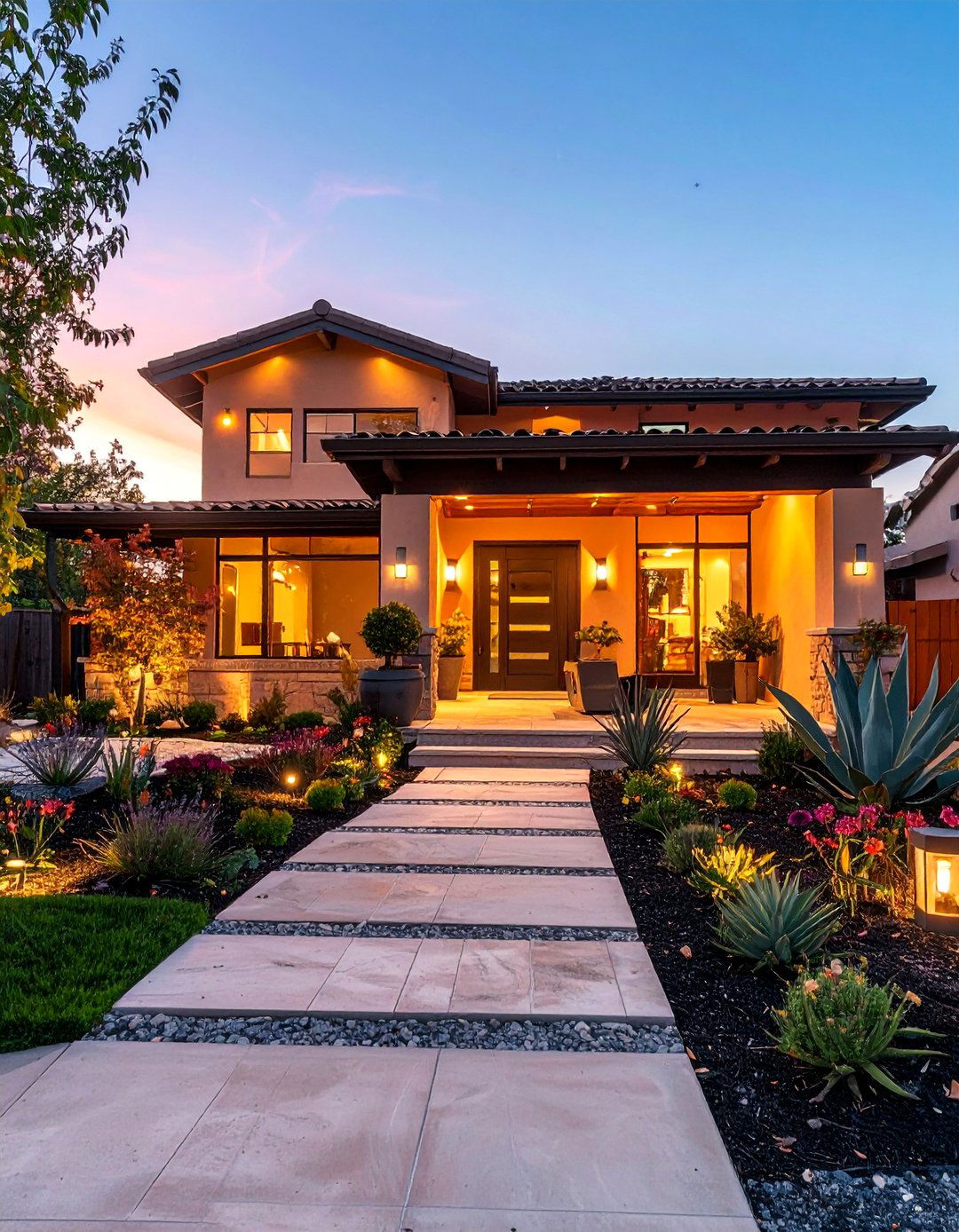




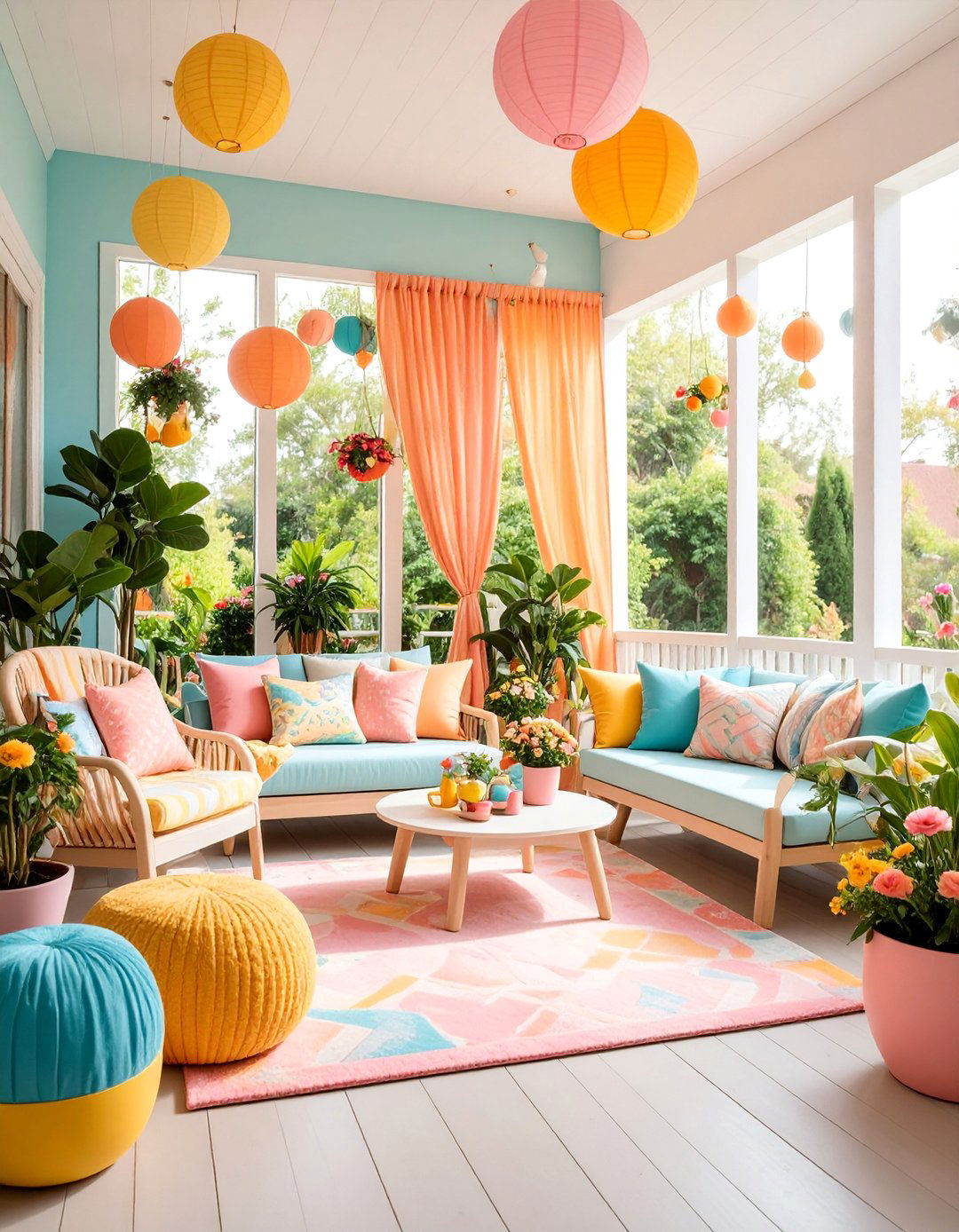




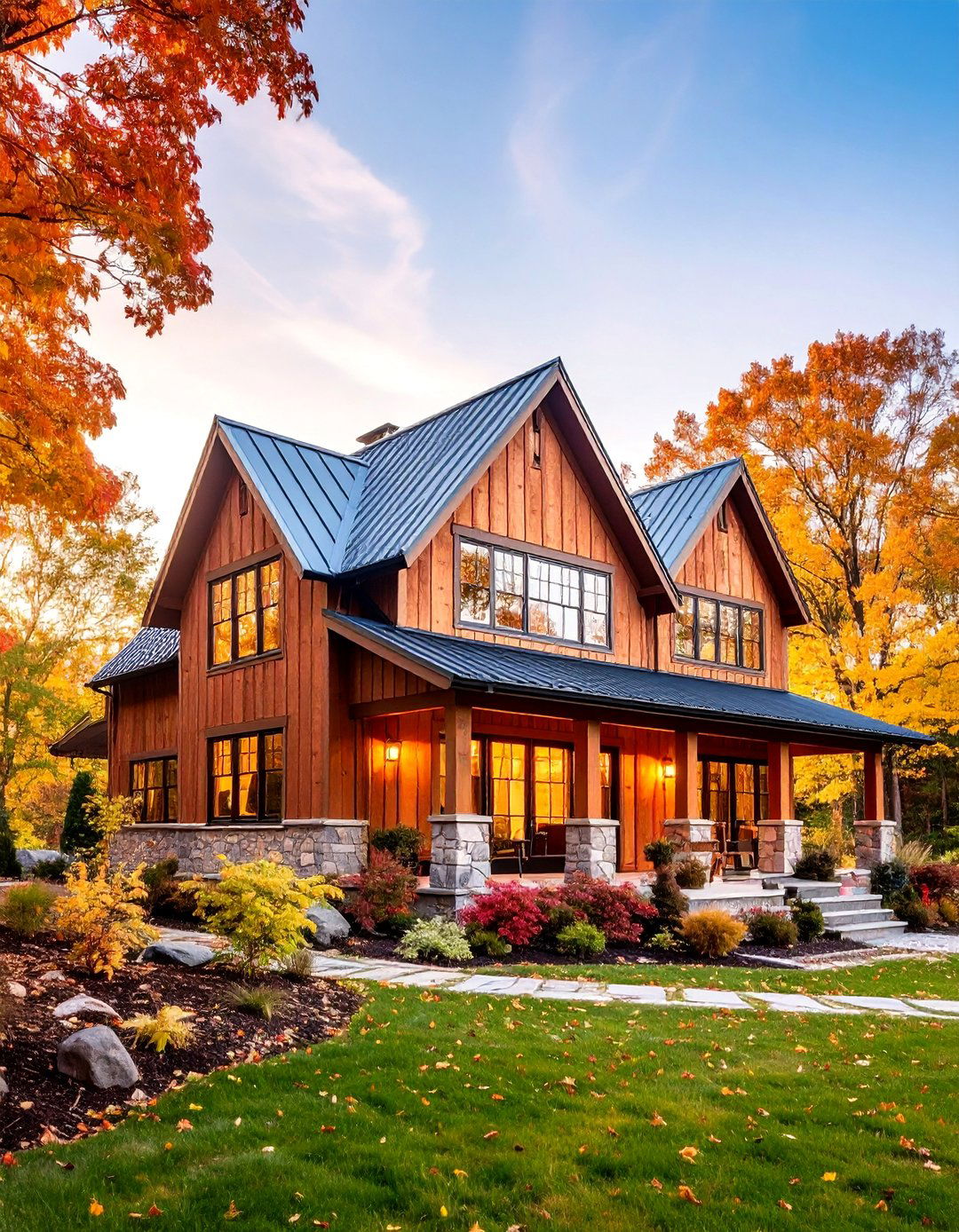

Leave a Reply